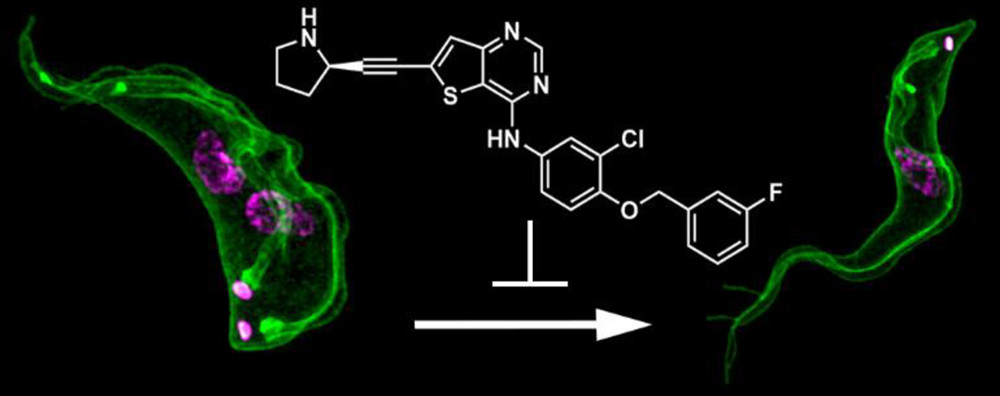5-Diphosphoinositol Pentakisphosphate (5-IP7) Regulates Phosphate Release from Acidocalcisomes and Yeast Vacuoles
Abstract
Acidocalcisomes of Trypanosoma brucei and the acidocalcisome-like vacuoles of Saccharomyces cerevisiae are acidic calcium compartments that store polyphosphate (polyP). Both organelles possess a phosphate sodium symporter (TbPho91, and Pho91p, in T. brucei and yeast, respectively), but the roles of these transporters in growth and orthophosphate (Pi) transport are unclear. We found here that Tbpho91-/- trypanosomes have a lower growth rate under phosphate starvation, and contain larger acidocalcisomes that have increased Pi content. Heterologous expression of TbPHO91 in Xenopus oocytes followed by two-electrode voltage clamp recordings disclosed that myo-inositol polyphosphates stimulate both sodium-dependent depolarization of the oocyte membrane potential and Pi conductance. Deletion of the SPX domain in TbPho91 abolished this stimulation. Inositol pyrophosphates such as 5-diphosphoinositol pentakisphosphate generated outward currents in Na+/Pi -loaded giant vacuoles prepared from wild type or from TbPHO91-expressing pho91Δ strains but not from the pho91Δ strains, or from the pho91Δ strains expressing PHO91 or TbPHO91 with mutated SPX domains. Our results indicate that TbPho91 and Pho91p are responsible for vacuolar Pi and Na+ efflux and that myo-inositol polyphosphates stimulate the Na+/Pi symporter activities through their SPX domains.
Evgeniy Potapenko, Ciro D Cordeiro, Guozhong Huang, Melissa Storey, Christopher Wittwer, Amit K Dutta, Henning J. Jessen, Vincent J. Starai and Roberto Docampo. 2018. Journal of Biological Chemistry; 293:19101-19112.
doi: 10.1074/jbc.RA118.005884



